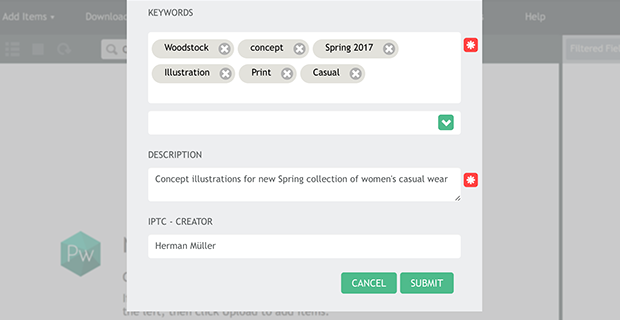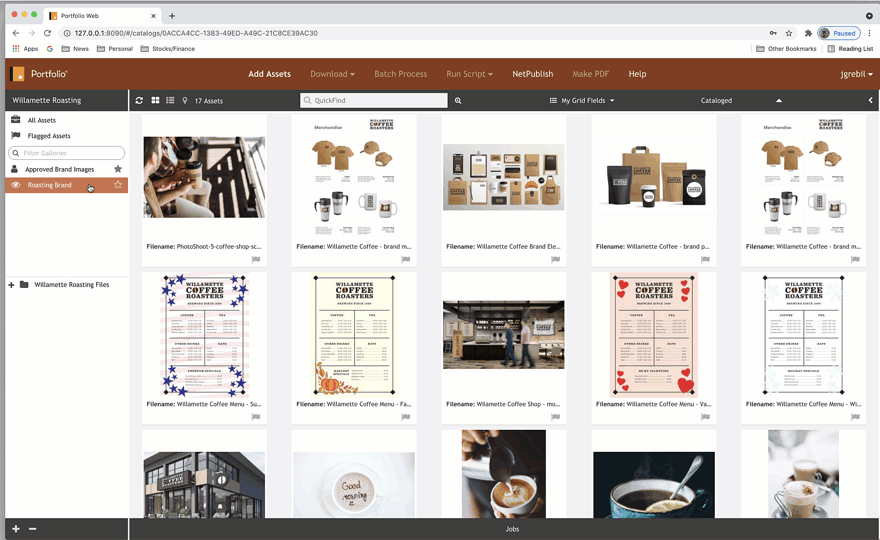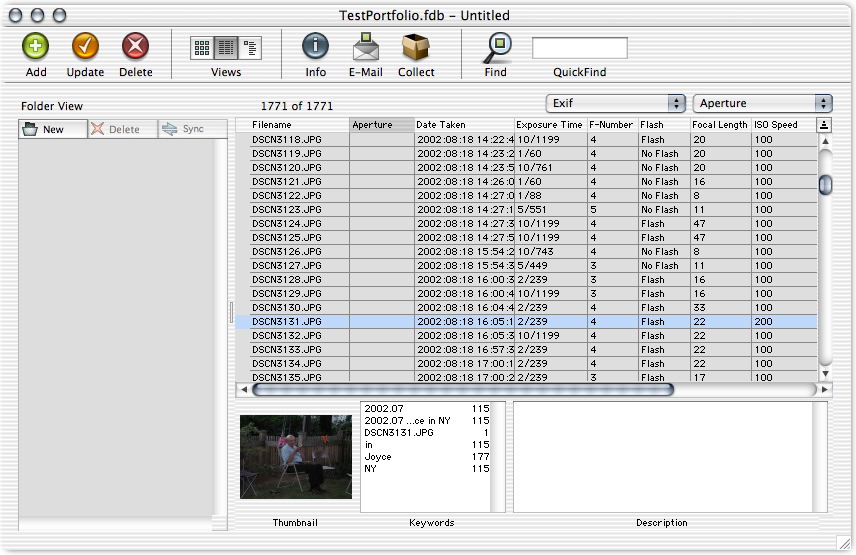


They have since switched to a cloud version. When I wrote this article in 2013, we used Portfolio version 8. It has a large price tag but has saved us 1000’s of hours over the years. Note 2016: Extensis Portfolio is STILL the best way we know to export and import metadata in large batches, then embed the metadata to files. We batched this process by individual CD: In order to extract and embed all keywords and descriptions, we set up two catalogs in Extensis Portfolio, one to identify Keywords, the other for Descriptions, this was all the metadata set up at our PCD’s creation. Extract and embed metadata descriptions and keywords using Portfolio You don’t have to do this, but we like the consistency.Ģ016 Note: Not only do we like the consistency but by embedding the name of the source in the filename, we preserve a part of the item’s provenance, while the numbering system keeps the images in their original order. Rename files into Codifi-friendly format, using "A Better Rename" Once PCDMagic “automagically” converts these files, all we did was copy and paste them into the. The new files will show up in the same folder as the originals. Select all files by using “Command: A”, and in the bottom left corner of your browser, click “convert to” and select your file type (we convert to. You will need to open the browser of PCDMagic and select the folder to view. Import PCD from CD to Hard Drive in the PCD folderĮasy as Insert disk, Copy and Paste! If your computer is slow, you may want to bring reading material. When setting up each CD folder, we make a place to store current and future versions of each set of files stored in the same place. jpg’s of our files, but with PCD magic, we prefer to convert them into. You can read more about our processing folder structure here.Ībove, you can see ‘PCD-Box 3’: This is the name of the physical box the hard copies of the PCD’s are stored in. This pipeline will not only store original media but eventually the processed images, once we can extract and embed the metadata. Create folders to house the PCD, TIF, and JPGīefore a Kodak PCD is even entered into the system, CoDA creates a standard folder structure for how files will be converted and stored a “processing pipeline” of file-storage. Below is our workflow to convert Meg Conkey’s time capsules of images to a usable and shareable format. The only solution available which will keep images high-resolution, convert and maintain original metadata, and save you a LOT of working hours is PCD Magic!
PORTFOLIO EXTENSIS BATCH REMOVE KEYWORDS ZIP
The beginning of your zip recuperation journey, these steps may not be obvious, but they are very doable. Presenting the Kodak Photo CD conversion process! Let them deal with it! We just couldn’t give up that last glimmer of hope. Maybe you have a pile of Kodak PCD’s in the top drawer of an old, busted, file cabinet, perhaps you have decided to let them sit on that dusty shelf, or reverted to rescanning the original film and forgetting all the work hours invested in 1996 towards obtaining these caskets of imagery… We had thought about bronzing our gold CDs and handing them down to posterity, a box for the interns. If done incorrectly, it means risking of loss of fidelity in image resolution and precious metadata. Heaven forbid one should attempt to convert these metallic gems into something accessible, such as a tif, jpg, dng… Conversion can be tricky. Even Adobe Photoshop has dropped the plugin. Kodak retained proprietary rights to the formatting of these CD’s and now PCD’s are almost completely incompatible with most applications.


Once the pinnacle of digitized photo conversion and preservation, the Kodak Photo CD (Kodak PCD) is now practically obsolete. It should have been fairly straightforward, and then we came upon the notorious Kodak PCDs. We expected the process to go like many other projects. All media was impressively cataloged and organized, waiting to be formatted into a custom Codifi solution. This collection features media ranging from chalkboards to fieldnotes, forms, slides, floppy zips, Kodak PCDs, and powerpoint presentations. Meg Conkey challenged CoDA with an extensive, daunting, yet fastidiously kept, array of media backlogged to the early 1990’s with her Between the Caves Project.


 0 kommentar(er)
0 kommentar(er)
